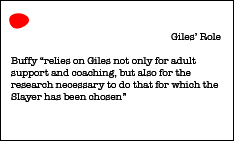
Taking Good Notes
Know Whose Words Are Whose
Sloppy note-taking can really get you in trouble, so invest some time in taking careful notes.Here's an old school note-taking method that people have been using for eons. The concepts in this method can be easily adapted for notes you take using word processing or bibliographic management programs.
You'll need index cards, different colored pens/highlighters, and your sources.
Your cards could look something like this:
Quote

Paraphrase

Summary

Your Own Ideas

On the front of the card:
- In the upper left corner, color code the cards - use one color for quotes, another for summaries, another for paraphrases and another for your own thoughts. Or, you can write Q, S, P or Me.
- In the upper right corner, write the topic of the quote, summary, paraphrase or your original thought.
- In the center, write your quote (use quotation marks), summary, paraphrase or your original thought.
-
Write the citation, or some code for the citation info, like the author's last name and first few words of the title. Include the page number(s) too. If you use a code, be sure to have the complete citation info somewhere for later use.

Using a note-taking system like this will help you:
- Quickly distinguish quotes, summaries, paraphrases and your thoughts from one another
- Organize your information - you can shuffle and categorize your note cards based on the topics you've assigned them and write your outline faster
- Easily work in your citations as you write

Note Taking Tips
If you're doing a lot of outside reading, taking a few seconds to jot down notes as you read will save you time later on. Take notes in the margins of things you photocopied or printed out, use post-its, use a notebook - whatever works best for you. Just don't write in library materials. The next person who looks at what you wrote in will be annoyed. Oh yeah, and that's called vandalism.







